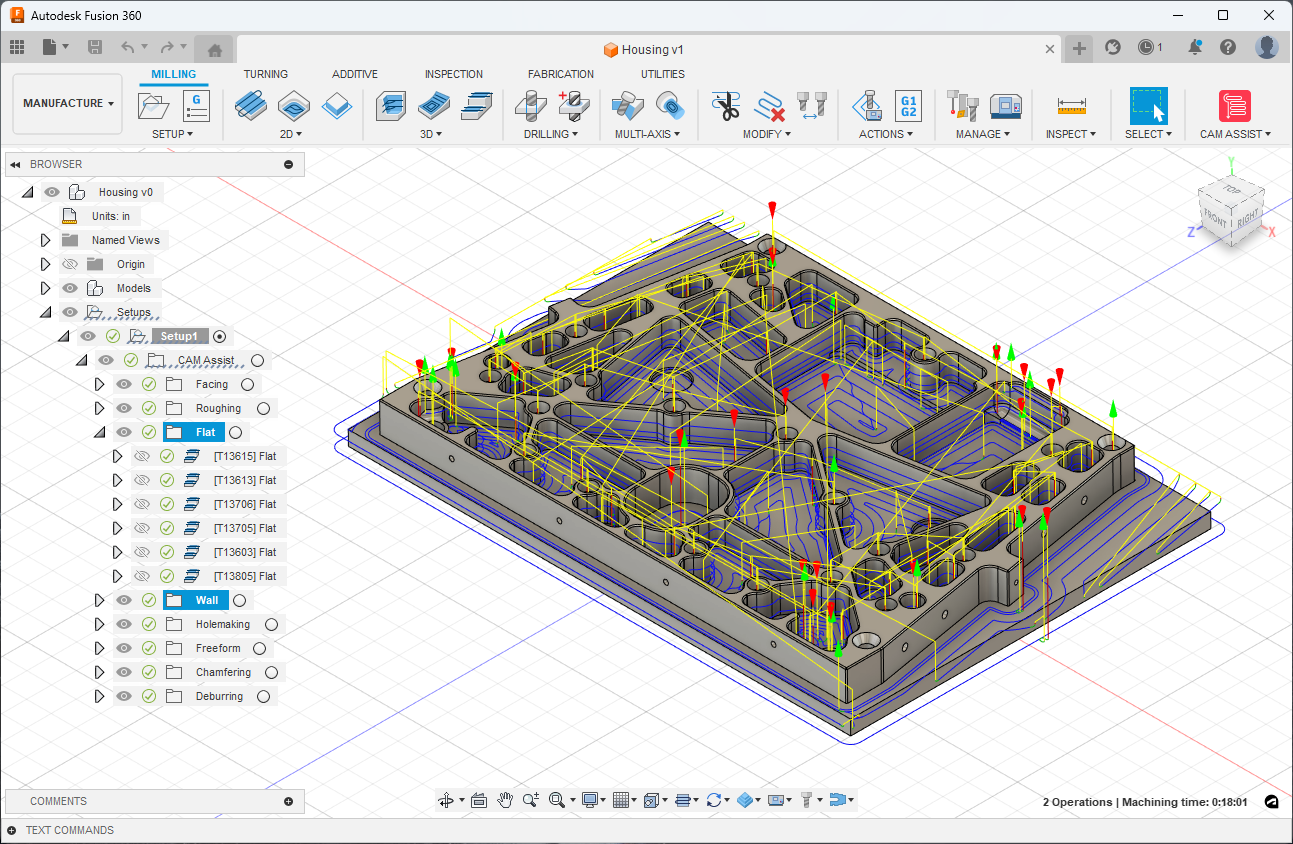
In July 2023, CloudNC released CAM Assist into the world, and it’s now being used by manufacturers and machinists to accelerate their overall CNC machine programming time (by up to 80%!) and help them be much more productive.
It’s a step change for the industry - but it’s fair to say that not everyone has fully understood this yet. Indeed, one question that I’m sometimes asked by people who haven’t seen CAM Assist live in action yet is: what’s the difference between what you’ve created, and feature-based machining?
My short answer is that they’re chalk and cheese: CAM Assist is, in effect, a smart CNC machinist on your desktop, capable of accelerating every aspect of your programming and production, while feature-based machining is much more limited.
Not convinced yet? OK, let’s take a deeper dive!
Feature-based machining: what is it?
Simply put, feature-based machining is a manufacturing approach that utilizes computer-aided design (CAD) models to automatically recognize and define specific features on a workpiece, such as holes, pockets, or fillets. You can then assign your workshop’s own preferred means of producing these features.
In theory, by identifying these geometric features, feature-based machining software can generate tool paths and machining strategies that produce those features. It’s like building up a macro library of different types of feature, which the software can join together. Essentially, by using feature-based machining, you’re telling the machine, ‘every time you see a feature that looks like this, I want you to make it in this way.”
There’s nothing wrong with that approach per se - it can work well if you’re making the same sort of parts all the time, as you can press a button and it will make those parts, with the same kinds of features, in the same way.
The downsides though are that the systems take a very long time to set up - months, in fact, as well as years to take to maturity - as you have to specify yourself exactly how you want every type of feature to be machined. In addition, they only really work on simple parts: they don’t really function well if you ask them to make something outside of what you’ve set it up to do.
So, there’s no flexibility - feature-based machining can do one thing, and one thing only, and that’s make components with specific identified features. It’s not particularly suitable for job-shops where the variability of parts coming through the door from customers is extremely high.
Ultimately, feature-based machining is quite limited. It’s an attempt to replace a CAM programmer’s decision-making process with a big book of set rules, which is essentially impossible - there are trillions of possible geometries, and trying to come up with a rule for every one is impossible for a human, and it can take years to build a decent library of machining macros.
But even then, that library is going to be pretty specific to the parts you make, tools you already have, and machines you’ve set it up for. And, as every machinist knows, nearly every part and feature has exceptions to the rules, and therefore to cover them all, you’d need a book that’s thousands of pages long.

CAM Assist: the difference
That’s not how CAM Assist works, and the difference is that whereas feature-based machining can identify a certain feature on a part and you can make a macro for how to make it, CAM Assist is an AI that’s been programmed to know how to make the whole component.
That means instead of recognising features and working out the best way to make them, CAM Assist works out the best toolpaths and strategies based on all the elements that a component consists of, because CAM Assist understands the part holistically, as a whole.
At its core, CAM Assist is like a machining technician: It has a practical understanding of the physics and processes of cutting metal so it can make the sort of decisions that a machinist would make, and would know - for example - that it’s a bad idea to run a tool into a corner the same diameter as the tool, as the physics engine knows that will result in chatter.
So, with CAM Assist:
- You're not coming up with macros. It already knows what to do, and we're making it smarter every day
- Give it a hundred tool libraries and a hundred machines, and it knows how to get a result for every combination
- CAM Assist works straight away - you don’t need to tell it how you think it should do the work
Effectively, it’s like having that technician on your desktop that is going to make its best effort at completing the component as a whole every time, and will supply you with a workable strategy that could be good to go, or might require some final edits and improvements from a CAM programmer so it works for their factory and machines. (The ambition, ultimately, is to get to a point where you can make every part, in its entirety, with a single click.)
And what’s more, CAM Assist teaches someone who has never machined a part before, as it shows them the strategies that it recommends to make any kind of component. That’s pretty much the opposite of feature-based machining, which could only show you what it’s been taught to do in a very specific scenario.
So in summary - while feature-based machining is a solution that is of relatively niche usage to a small cohort of businesses, CAM Assist is much more flexible, and can be a game changer for all precision workshops, from individual users all the way up to large production lines.
Want to find out more? Get in touch and see CAM Assist in action today - we’d love to walk you through what it can do!




